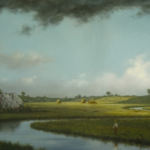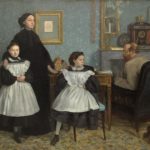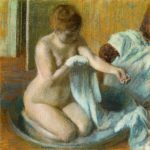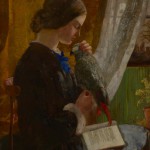
The landscape of ideas, explorer artists, the pastoral arcadia of settlers, and the natural wilderness will be surveyed in Not As The Songs Of Other Lands exhibition at the Ian Potter Museum of Art, University of Melbourne. Recalling sentimental landscapes in the manner of Claude Lorrain (1600-1682) and so-called ‘improved landscapes’ with the inclusion of mercantile, agricultural and industrial iconography, this Symposium will highlight the introduction of American theories of perception and visual representations of materiality and ideology in the landscape, especially when positioned alongside the Australian interpretation of Indigenous landscapes and cultures. There are many parallels to be found in the representation of such complex cultural heritage. This symposium will activate these ideas beyond the scope of the exhibition space. Join us as we examine the connections between the depiction of landscape, and the visual representation of myth and…













